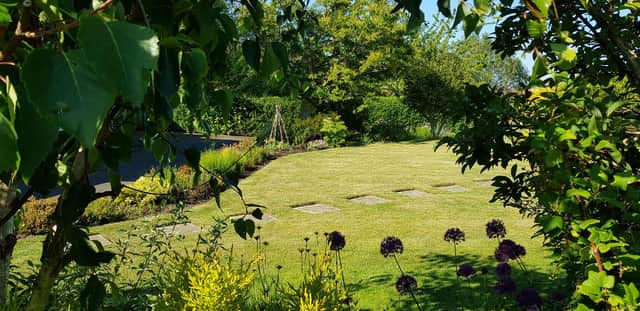GARDENING: Why not go a little bit ‘wild’ in the garden?


Reaching beyond the obvious human benefits, it then focused on the natural world and positive aspect of such activities in encouraging eco-systems and providing a lifeline for threatened species.
This is so of gardens anywhere large or small, town or country, and as the growing season begins it begs the question `How eco-friendly is your plot?` If, at the height of summer it`s full of colourful flowers with a pristine, weed-free lawn that fills your heart with joy and attracts praise at every turn, that`s good. You are making more of contribution toward nature than you perhaps realise. Flowers supply a stream of nectar for pollinating insects. So, keep deadheading to encourage continuity of bloom. Lawns support an eco-system of invertebrate life which in turn attracts feeding birds.
Advertisement
Hide AdAdvertisement
Hide AdA totally weed-free lawn is the stuff of legend if you`re entering a `best garden` competition, the likes of which I`ve judged for years and therefore do appreciate. It`s a monoculture of grass raised from the finest quality seed and requires a year-round maintenance programme: raking, aerating, top-dressing, weeding, feeding, watering and mowing. Imagine the reluctance when you are advised by top gardener-naturalists to lay off the selective weed killer and allow wildflowers (weeds to some) a chance to enter in support of pollinating insects.
I confess to having gone down this path years ago and have had no regrets. At first glance the lawns are tidy green areas because they are cut weekly, but for one month in summer the mower remains in the garage. This allows clover, daisies, self-heel et al to bloom and attract a diversity of bee species. As the flowers fade the lawns are easily brought back into line and we feel the better for it.
Some gardeners find the next steps more difficult to take because they involve tampering with the garden`s formal appearance, when everything is neat and tidy, under control. But why not try to create a mini natural habitat in a corner where grass grows freely through a pile of logs with a patch of nettles nearby as fodder for red admiral butterfly larvae? Sow wildflower seeds and introduce homes and nesting boxes for insects, birds and mammals.
You may well have noticed a patch of moss in the lawn and decided to reach for a chemical, possibly iron sulphate, which zaps it within days then you rake it out. If so, stop to consider why it appeared in the first instance. Moss forms in lawns for several reasons. It could be poor drainage, an acidic soil, the shade from overhanging trees or, mowing too close to the ground. If you don`t eliminate the cause, it will return.
Advertisement
Hide AdAdvertisement
Hide AdIt`s the acidic nature of the soil that prolongs patches of moss in our lawn but I`m not reaching for Dolomite lime to raise the pH level. There are positives in its presence. It supports invertebrate life which a variety of resident birds feed on daily, and some (blackbird, goldfinch and wren) are currently collecting it as nesting material. We recently raked some from the lawn for a finishing off exercise - to cover the compost in bowls containing hyacinths and dwarf daffodils. Lawns are also a handy source when you need a natural material to line summer hanging baskets.
Pesticides were banned in this garden a long time ago. Not just because we grow edible crops and a typical instruction on the label of a poisonous dust or liquid would read, “Warning; Do not harvest for two weeks after application.” Also in mind was the effect on beneficial insects, the pollinators and those that prey on crop pests and are classed as the gardeners` friends. Insect-eating wrens nest every year somewhere in the garden.
Occasionally at ground level but last time it was at two metres in a golden conifer. They are normally secretive birds, but one has accompanied me in the greenhouse recently. In search of insects? A nesting site? Or both?